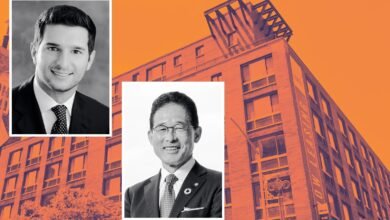Politicians Try Hand at Megaproject
Development is risky and complicated. It involves lots of decisions, and bad ones can be catastrophic.
For megaprojects, everything is multiplied. They are enormously challenging even for the smartest and most experienced developers.
The worst way to execute a megaproject would be to hand decision-making authority to more than two dozen people, each representing different constituencies with divergent and sometimes conflicting goals — and little or no real estate experience.
To make it even harder, you would have politicians lead this 28-member group and require a two-thirds majority vote to approve a master plan.
You would include three levels of government, a community board, local residents, environmental justice advocates, planning organizations, labor unions, industry groups and public housing tenants.
You would install a socialist as a vice chair. For good measure, you would tack on six advisory groups, each with its own agenda.
As a final complication, you’d transfer the property to a local development corporation of city, state and federal officials, plus local residents, that must approve every RFP and contract — and have enforcement authority.
Welcome, friends, to the Brooklyn Marine Terminal.
The $3.5 billion, 122-acre project would build 6,000 homes (40 percent of them affordable), modernize an aging, money-losing port, and completely reimagine a huge chunk of long-neglected waterfront.
If you’re wondering why votes on the project have been repeatedly canceled for lack of consensus, see above.
Yet the process has its defenders.
“I think it’s a good model,” said Sen. Andrew Gounardes, “but it can get a little messy.”
Gournardes, the non-socialist vice chair of the 28-member task force, no doubt feels like he’s herding cats as he tries to get at least 19 of them to agree on something.
“There are voices that want nothing to happen here,” he said in an interview. “They say they want to protect the port, but they don’t want to see any construction, investment, trucks, noise, anything. They are using the cover of the port to prevent anything from happening here.”
Others do want something to happen, but disagree on what.
“There are voices in the community who want to keep the entire site industrial,” Gounardes said. “There are voices on the same block who hate the port and want open space across the waterfront. There are some people who say, ‘Put housing there.’ There is not one unified vision of what this site could be or should be.”
Like he said, it can get a little messy.
“There is not one unified vision of what this site could be or should be.”
The massive undertaking, announced in May 2024, is going through a state process called a General Project Plan. But the Hochul administration is deferring to the city, making the Economic Development Corporation, led by Andrew Kimball, the lead agency.
In fairness to EDC, it is trying to avoid the outcomes of other models for megaprojects involving public land. Atlantic Yards, which is now Pacific Park, is half-built, in foreclosure and on its third developer — 22 years after it was announced.
But at least something has been built there. The same cannot be said for Sunnyside Yard, where the de Blasio administration put together a steering committee like the one at Brooklyn Marine Terminal. It was dysfunctional from the outset, with members demanding a financially impossible amount of affordable housing.
They even pushed their own hero, Rep. Alexandria Ocasio-Cortez, off the committee when she tried to reason with them. Eleven years of planning has come to nothing.
The Brooklyn Marine Terminal task force, in contrast, has lots of members who want to get to yes, Gounardes said. It looks like they are close to a compromise on a master plan that is one-third port, one-third housing and one-third open space. Port renovations will cost about $1.7 billion.
There is still a lot of posturing. For example, Council member Shahana Hanif is demanding the project include “real displacement protections for rent-regulated tenants and small businesses,” even though it is not removing a single home or store, and rent-regulated tenants are already the most protected renters in the nation.
Hanif, socialist vice chair Alexa Avilés and other progressives have whittled the number of market-rate homes down to the bare minimum needed to yield $1.3 billion for the port, which will also get $360 million from a federal grant — unless the Trump administration cancels it while the task force bickers.
If this were not public land, politics were not an issue and no constituencies needed to be pacified, a developer could build more than 10,000 market-rate homes with spectacular views of New York Harbor, the Statue of Liberty and the Lower Manhattan skyline.
That would generate enough profit to subsidize thousands of affordable units, ample green space and esplanades, a ferry stop and shuttle buses to the nearest subway stations.
But in the real world, that is just as far-fetched as the Sunnyside Yard fantasies.
The Brooklyn Marine Terminal project will get done under this incredibly convoluted model — or it won’t get done at all.
Read more

The Daily Dirt: Red Hook Terminal vote kept at bay

City once again kicks can on Brooklyn Marine Terminal vote

City nabs control of Red Hook waterfront, plans redevelopment




